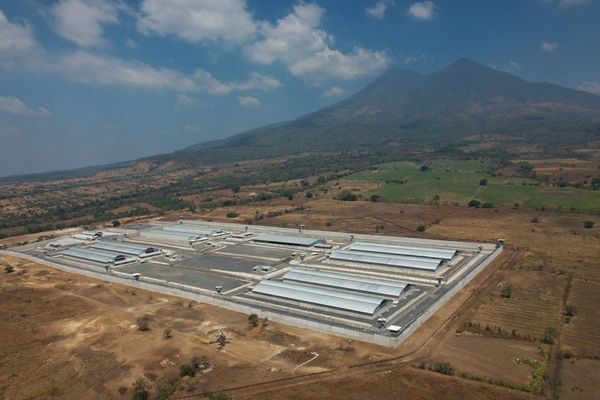
If the “dark satanic” cotton mills of Lancashire and the coal mines of Yorkshire were the physical embodiment of the first industrial revolution, this time around it is the anonymous blinking boxes that are data centres.
These blank-walled, humming warehouses of vast computing power support the digital cloud that has transformed the way we live over the past 15 years. Without them, smartphones as we know them would not exist.
Now increasingly they are dedicated to the AI technology that will shake everything up all over again. Data centres — DCs are they are known in the trade — are springing up all over Britain, often barely noticed, with perhaps 100 more in the pipeline.
They are particularly heavily concentrated in London and the South-East, close to some of the hungriest consumers of data in the financial services industries of the City and Docklands.
Indeed, without much fanfare London has become one of the world’s biggest markets for data centres anywhere in the world outside America. And the pace of their roll-out is about to accelerate.
When Donald Trump swept into the UK for his historic second state visit last month he brought with him the tech barons who run the world’s biggest and most influential corporations. Between them they pledged more than £31billion of infrastructure investment for the UK — much of it in the form of data centres.
Microsoft, for example, will fund the UK’s largest supercomputer at a new Nscale data centre in Loughton, on the Essex fringes of east London’s suburban sprawl. The facility will house 23,000 powerful chips known as graphics processing units (GPUs) from the world’s biggest company, Nvidia. It is expected to open in early 2027 to support AI research, healthcare and defence.
Not to be left out, Google marked the US President’s trip with the opening — carried out by Chancellor Rachel Reeves — of a new data centre of its own in Waltham Cross, Hertfordshire, 30 miles from central London. The site, the centrepiece of a £5 billion investment programme pledged by Google, will help meet growing demand for AI services such as Google Cloud, search and maps.
But long before Air Force One touched down at Heathrow another US billionaire had already made a huge pledge to develop data centres and cloud infrastructure. Oracle was founded and headed by Larry Ellison, the world’s second-richest man. He has a fortune valued at almost $400 billion and is the biggest funder of the Tony Blair Institute.
In March, the company said it will invest $5billion in Britain over the next five years to meet the “rapidly growing demand for its cloud services”.
Not everyone is impressed. Sir Nick Clegg, former deputy prime minister and consigliere of Meta’s Mark Zuckerberg, criticised the announcements as “one-way traffic” that left the UK as a “vassal state” of Uncle Sam dependent on “sloppy seconds from Silicon Valley”. Maybe, but his intervention is likely to have little more impact than King Canute’s doomed bid to hold back the incoming tide.
There are already more than 450 data centres in the UK, of which around half are in or close to London, including many of the so-called hyperscale data centres supporting cloud providers such as the “big three” Amazon Web Services, Microsoft Azure and Google Cloud.
But measured by capacity the region is even more dominant, with 1,092 megawatts in the London region, or around 80 per cent of the country’s total of 1,360MW. Frankfurt, Europe’s second biggest data centre hub, has a mere 805MW of capacity by comparison.
Slough, the town that John Betjeman notoriously invited bombs to fall on, is the undisputed data centre capital of the UK with around 35 locations — and more under way. There are also major clusters at Hayes and Park Royal in west London.
Demand for data is growing at a ferocious pace — perhaps 15 per cent annually — and the data centre industry is having to work hard to keep up. The march of everyday use of AI technology for tasks such as search has fuelled the demand — and ratcheted up the already gargantuan amounts of energy needed to power it.
According to Michael Hunter, head of commercial at renewable energy storage specialist Apatura, a Google Gemini AI search uses eight to 10 times as much power as a conventional Google search via the cloud. “It is like the difference between turning on a lightbulb for one second or having the TV on for nine seconds,” he said.
That has created a huge challenge for the UK. Much of Britain’s power generation is based in the North and Scotland, hundreds of miles away from the greedy data centres, voraciously sucking up the energy supplied by an ageing and inefficient transmission network. This has led to fears that the explosion of data centres in the South-East will simply overwhelm the ability of the electricity industry’s ability to supply it.
Data centres already consume about 2.5 per cent of Britain’s power and this is predicted to rise to as much as 10 per cent by 2035. Britain’s high energy costs are another hindrance. Powering a 100MW data centre costs £226 million a year in the UK, compared with £156 million in France and £67million in Sweden, according to a report from the Social Market Foundation. Power in Iceland, a growing data centre base, can be supplied at 20 per cent of the cost in London.
Dame Dawn Childs is chief executive of Pure Data Centres, which is currently building a four-storey centre near Brent Cross covered by one of the world’s largest living walls. She pointed out it can take 10 years to secure the power needed for a new data centre that can be built in two. “It’s the power that’s the constraint,” she said.
But Andrew Pilsworth, managing director, data centres and strategic partnerships at property investment and development company Segro - currently planning a £1 billion 56MW data centre at Park Royal in a joint venture with Pure DC - insisted the fears are overdone.
He said a huge new sub-station being built by National Grid at Uxbridge Moor near Iver should ease the worst of the pinch points — at least to the clusters of data centres west of London — by the time it is completed in 2029.
He said: “Is there as much power available as I would like? Maybe not, but the situation is not as binary as all that. Will data centre development grind to a halt? I don’t think that’s right.”
Sir Keir Starmer will certainly hope so. The Prime Minister wants the UK to be an “AI maker not a taker” and without data centres being rolled out at pace that will be a pipe-dream. Reliable figures about the economic impact of data centre development are hard to come by.
They are certainly not huge employers. Once a data centre is up and running it may only need a workforce of 30 to 50 people to operate it. But they are high skilled, highly paid jobs, with salaries typically averaging around £60,000, far higher than those at alternative uses of the land such as logistics centres.
More important, perhaps, is the vital role data centres play in Britain achieving the Government’s ambitions to be at the cutting edge of AI.
That could finally unlock the productivity log-jam that has held back the UK economy for so long, just as the spinning jenny did nearly three centuries ago. Starmer has vowed to transform the UK into “one of the great AI superpowers” and claimed the technology could increase the UK’s productivity by a game-changing 1.5 per cent a year, potentially adding £47billion to the economy annually over a decade. The stakes are indeed high. But the data centre revolution has only just begun.







